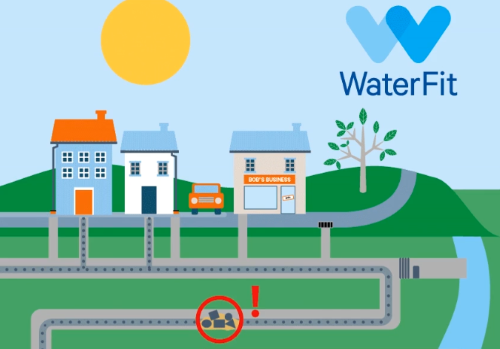
 Doing your bit
Doing your bit
Through WaterFit we hope to show you we’re going further and working faster towards achieving better river and coastal water quality.
The aim is to give you the bigger picture stuff to help you make informed decisions. But we can’t do it alone. Here’s how you can help us by doing your bit:
 Love your loo
Love your loo
Toilet sewers are simple transportation systems and are designed to cope with human waste, toilet paper and water only.
So, we need your help. And it's really easy-peesy.
Only flush the 3Ps:
- Pee
- Paper
- Poo
Everything else needs to be recycled or go in the bin.
![]()
 Think sink!
Think sink!
Fat facts:
- 21% of blockages are caused by waste fat, cooking oil and grease being poured down the sink
- Approximately 1.6m tonnes of food and drink waste is disposed of in the UK in one year
- Even small amounts of fat, oil, grease and food waste can contribute to blocked drains
This leads to:
|
8,500 blocked sewers Every year our wastewater team deal with around 8,500 blocked sewers across Devon and Cornwall, which costs about £4.5 million to unblock. |
|
|
£35m to maintain and upgrade This has an impact on bills, which we're trying to keep as low as possible. Overall, we spend £35 million a year to maintain and upgrade the sewerage network. |
Follow these 4 easy steps to help us dispose of the problem
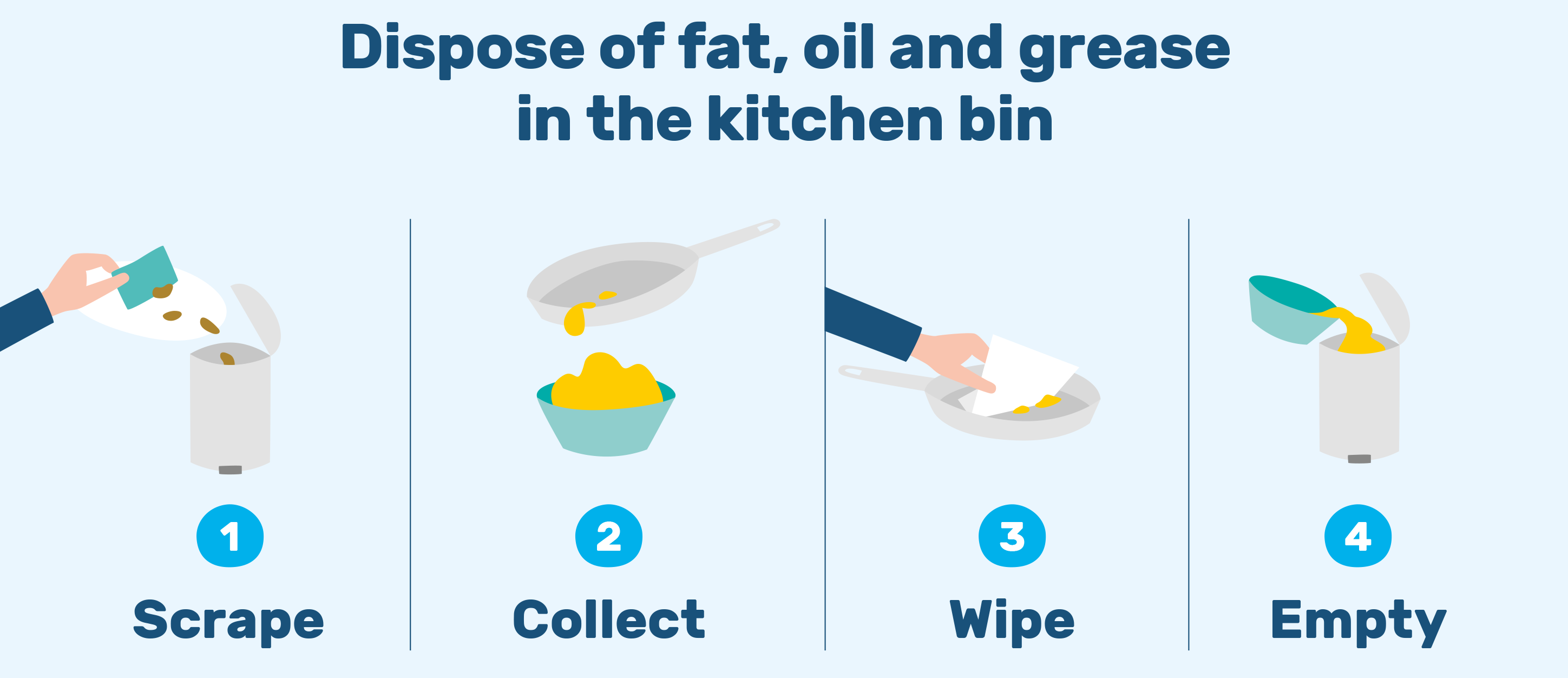
![]()
 Ordinary steps you can take to protect your sewerage and the environment
Ordinary steps you can take to protect your sewerage and the environment
You can make an extraordinary difference to how our sewers operate with the simple steps you take in the bathroom and kitchen . But there are more ways you can contribute and keep it everything flowing.
 |
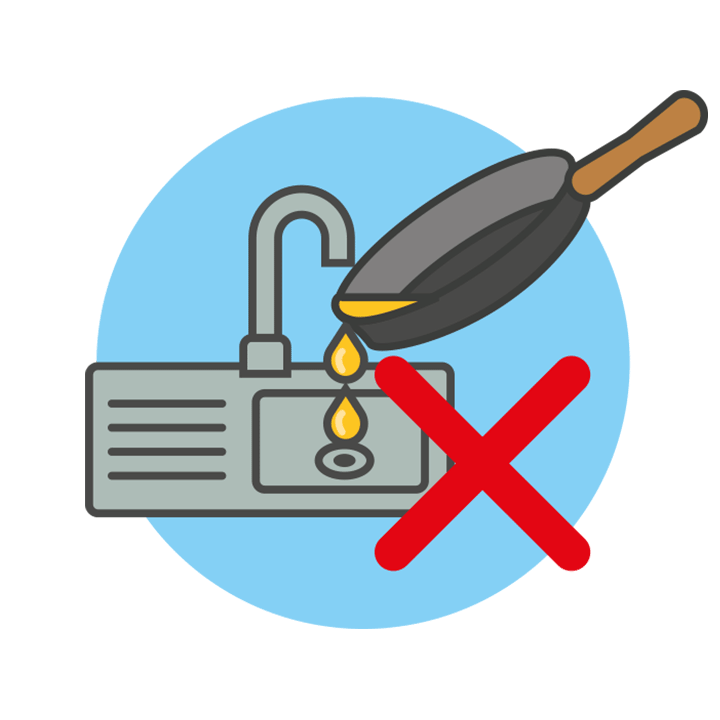 |
1. Only flush the 3PsPee, Paper and Poo is all that should be going down your loo. Wet wipes and sanitary items can block sewerpipes – they can even end up in rivers and on beaches. |
2. No FOG down the drainFats, Oils and Grease (FOG) poured down the drain create blockages, which can cause flooding and pollute our beaches. Tip cooled oil into a container, wipe grease from pans and plates with a paper towel and bin both. |
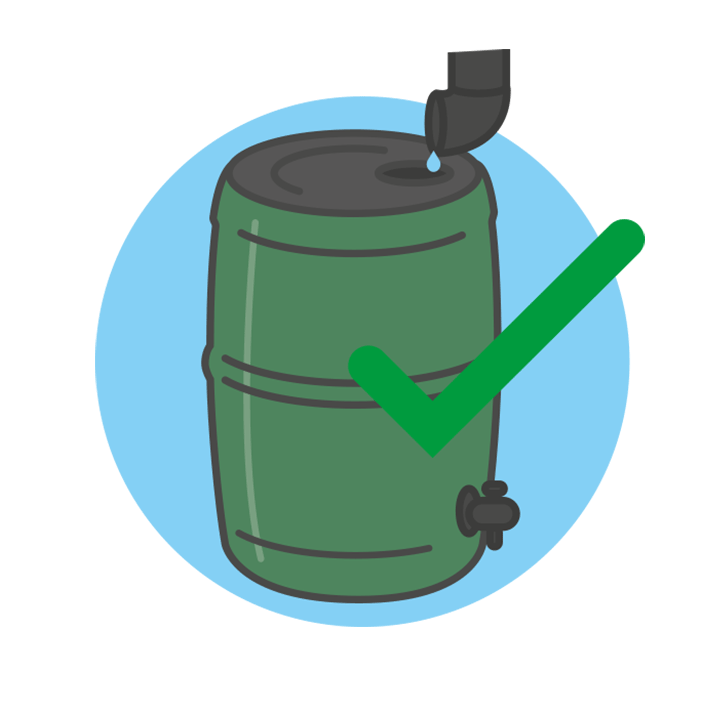 |
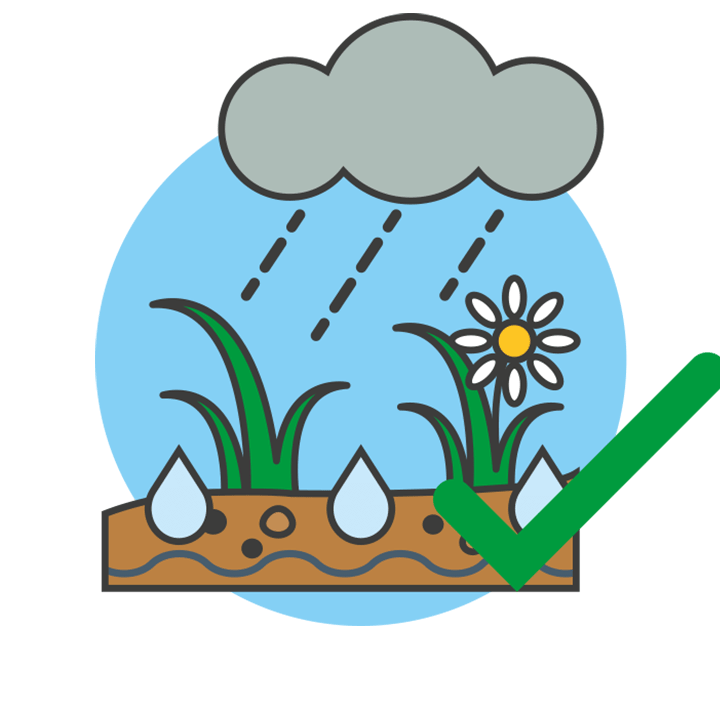 |
3. Get a water buttWith a water butt you’ll save water and also keep clean rainwater out of the sewage network. This helps to slow the flow and reduce storm overflow use when it rains. |
4. Think garden - think sponge!Lawns and flower beds soak up water like a sponge – rain runs quickly off hard surfaces like tarmac and patios and into the sewers. |
 |
5. Check it connectsIf you’re having a new toilet or appliance installed – check it’s connected to the right pipes. If it’s wrongly connected to a storm drain or surface water sewer it could end up in the sea. |

